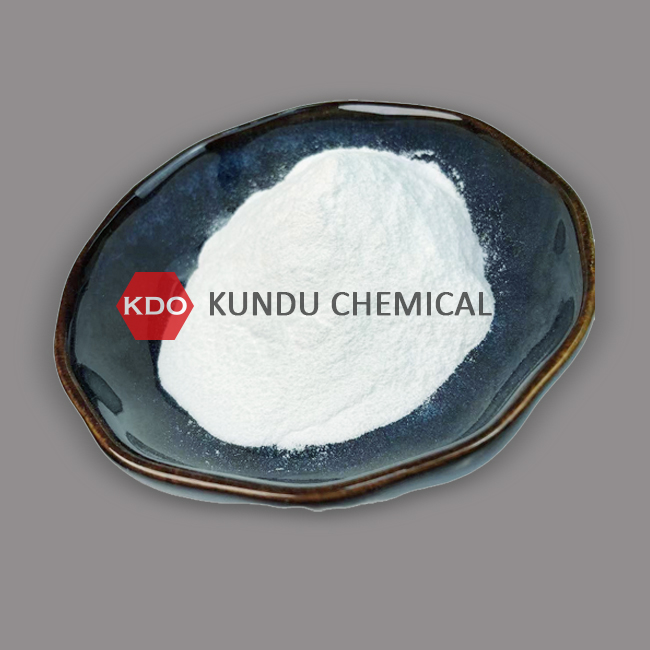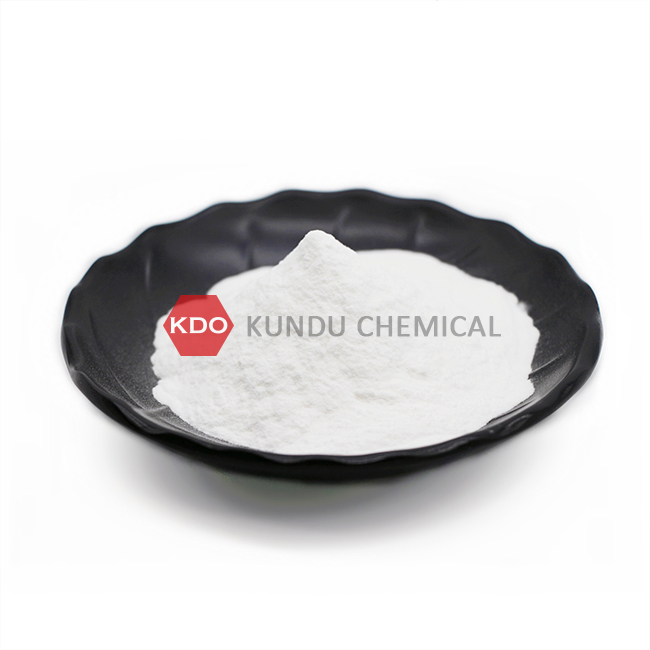- Time:2023/10/20Posted:SHANDONG KUNDU CHEMICAL CO.,LTD.
In the construction industry, the selection of construction materials and additives is crucial to achieving structural integrity, durability, and desired performance. Two commonly used additives in construction applications are Hydroxypropyl Starch ether (HPS) and Hydroxypropyl Methylcellulose (HPMC). Both these compounds play significant roles in enhancing the properties of construction materials, but they have distinct differences in their applications and characteristics. In this article, we will explore the disparities between Hydroxypropyl Starch ether and Hydroxypropyl Methylcellulose in the context of construction applications.
Hydroxypropyl Starch (HPS) in Construction
Hydroxypropyl Starch ether is a modified starch derived from natural starch sources, such as corn, potatoes, or tapioca. In the construction industry, HPS is utilized for various purposes due to its unique properties.

Key Properties of Hydroxypropyl Starch ether (HPS)
1. Thickening Agent: HPS acts as an effective thickening agent in construction applications, enhancing the viscosity of cement-based products like mortars and adhesives.
2. Workability Enhancement: It improves the workability of construction materials, making it easier for contractors to apply and shape them.
3. Water Retention: HPS contributes to the water retention properties of construction mixtures, preventing them from drying out too quickly. This is especially critical for mortar and plaster applications.
4. Setting Time Control: It can be used to control the setting time of certain construction materials, ensuring they remain workable for a specific duration.
5. Adhesion Improvement: HPS enhances the adhesion between coatings and substrates, ensuring a strong bond and, consequently, a longer-lasting finish.
Hydroxypropyl Methylcellulose (HPMC) in Construction
Hydroxypropyl Methylcellulose, or HPMC, is a semisynthetic polymer derived from cellulose, a natural polymer found in plant cell walls. HPMC is created through a series of chemical modifications that involve adding hydroxypropyl and methyl groups to the cellulose molecule. It is a versatile compound widely used in the construction industry.

Key Properties of Hydroxypropyl Methylcellulose (HPMC)
1. Water Solubility: HPMC is highly soluble in water, making it an excellent choice for applications where precise control over viscosity is required, such as cement and tile adhesives.
2. Viscosity Control: It offers precise control over the viscosity of construction mixtures, allowing for consistency and workability in products like mortars and grouts.
3. Improved Adhesion: HPMC enhances adhesion between coatings and substrates, ensuring long-lasting protection and a reliable bond.
4. Thermal Gelation: HPMC can exhibit thermal gelation properties, which are beneficial in construction applications where temperature changes are involved.
5. Film-Forming: HPMC is known for its film-forming capabilities, making it suitable for applications where the creation of thin, protective films is required.
Differences between HPS and HPMC in Construction
Source and Structure
- HPS: Derived from natural starch sources, HPS is a modified starch with hydroxypropyl groups.
- HPMC: Derived from cellulose, HPMC is a semisynthetic polymer with hydroxypropyl and methyl groups added to the cellulose molecule.
Solubility
- HPS: HPS is not water-soluble and primarily used for its thickening and stabilizing properties in construction applications.
- HPMC: HPMC is highly water-soluble, forming clear, viscous solutions. This property is valuable in applications where precise control over viscosity is required.
Thickening and Viscosity Control
- HPS: HPS acts as a thickening agent and enhances the workability of construction materials, but its thickening capabilities are limited compared to HPMC.
- HPMC: HPMC is renowned for its precise viscosity control, allowing for consistency and workability in construction materials like mortars, adhesives, and grouts.
Film-Forming
- HPS: HPS is not primarily known for its film-forming properties and is less suitable for applications requiring protective films.
- HPMC: HPMC is widely used in construction applications where the creation of thin, protective films is necessary, such as coatings and tablet coatings in the pharmaceutical industry.
Thermal Gelation
- HPS: HPS does not exhibit thermal gelation properties.
- HPMC: HPMC can display thermal gelation properties, which can be beneficial in construction applications where temperature changes and variations are involved.
Adhesion
- HPS: While HPS enhances adhesion to some extent, its adhesion properties are not as robust as those of HPMC.
- HPMC: HPMC is known for significantly improving adhesion between coatings and substrates, ensuring long-lasting protection in construction applications.
Applications in Construction
HPS Applications
- Mortars and Adhesives (thickening and workability enhancement)
- Setting Time Control (specific construction mixtures)
- Water Retention (preventing rapid drying)
HPMC Applications
- Cement and Tile Adhesives (precise viscosity control)
- Mortars and Grouts (consistency and workability)
- Coatings and Paints (film-forming and adhesion)
- Waterproofing Solutions (protective films)
Conclusion
Hydroxypropyl Starch ether (HPS) and Hydroxypropyl Methylcellulose (HPMC) are two distinct additives used in the construction industry, each offering unique properties and advantages. HPS, derived from natural starch sources, excels in applications where thickening, workability enhancement, water retention, and adhesion are required. HPMC, a semisynthetic polymer derived from cellulose, is highly water-soluble and provides precise viscosity control, film-forming capabilities, and strong adhesion. Its applications extend to cement and tile adhesives, mortars, grouts, coatings, and waterproofing solutions.
Understanding the differences between these two additives is crucial for choosing the right one for specific construction applications, ensuring that construction materials perform optimally and meet the desired standards of quality, durability, and reliability.





